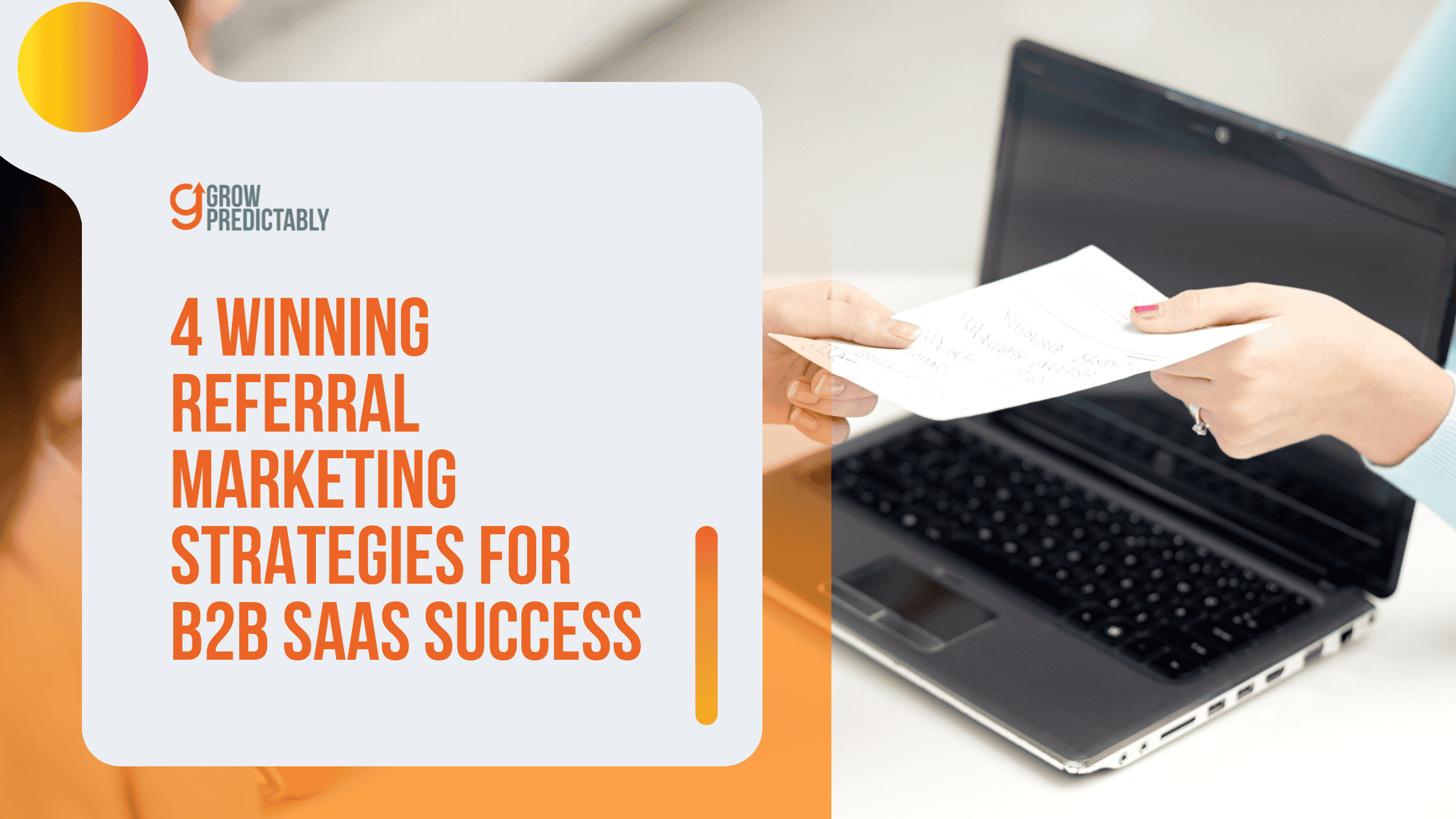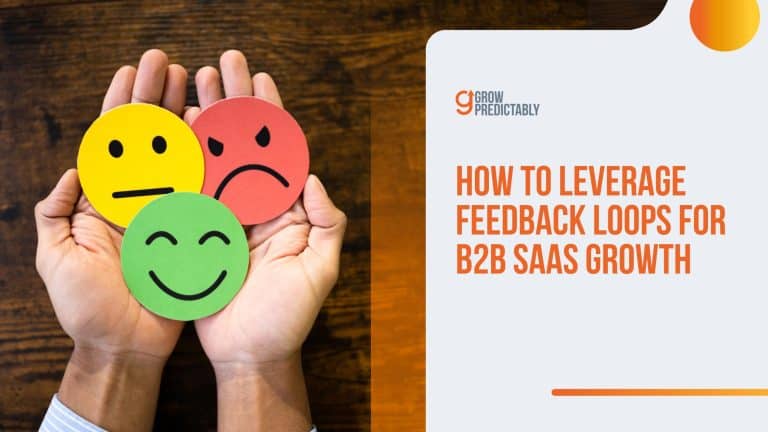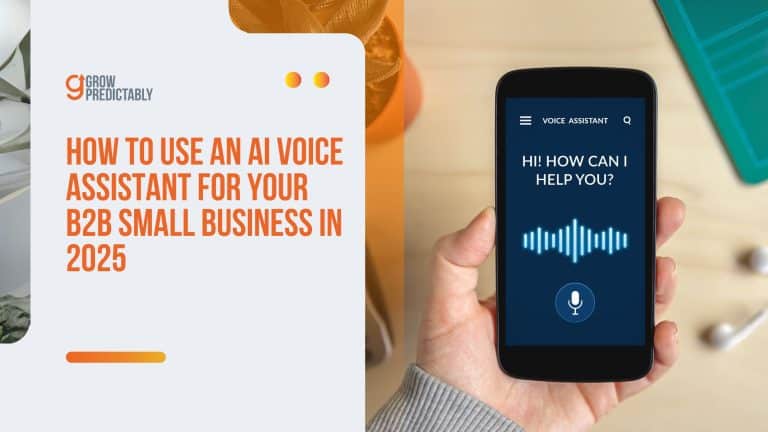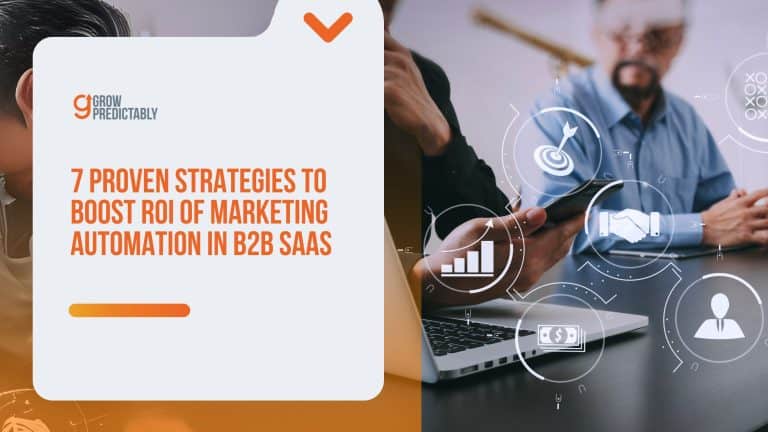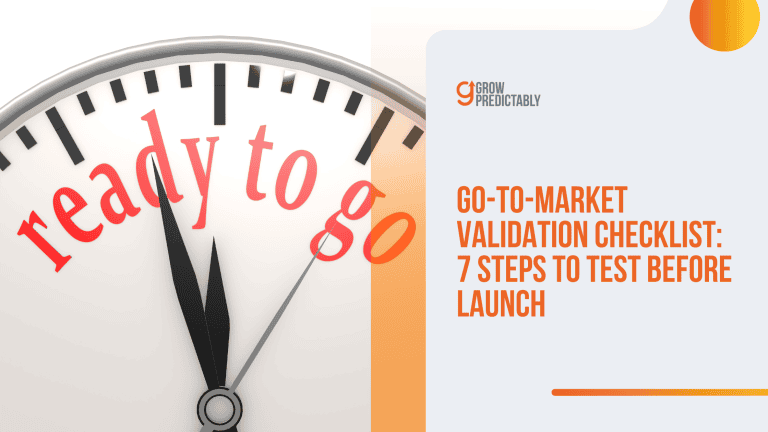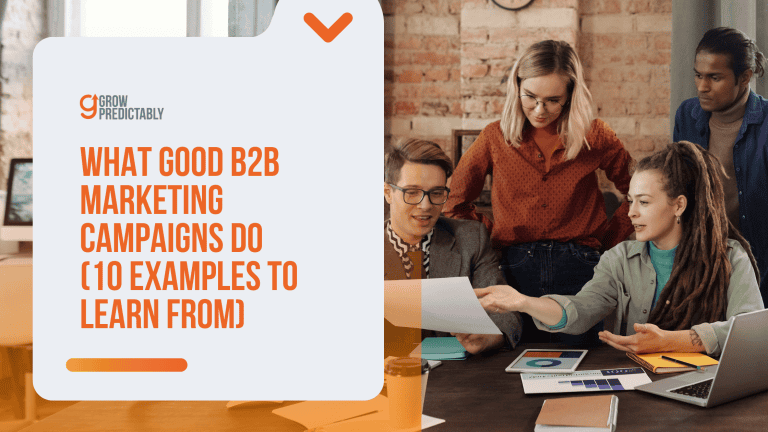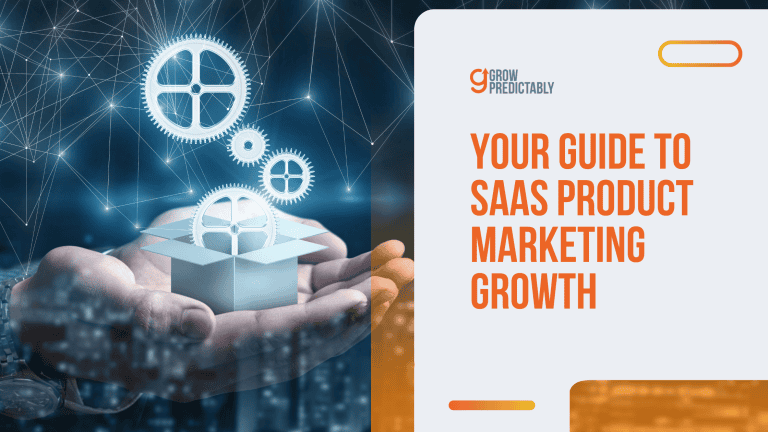4 Winning Referral Marketing Strategies in B2B SaaS for Success
What if your best new clients weren’t strangers but warm referrals from people who already love your product?
Data doesn’t lie: referred customers are 16% more profitable and stay longer than those acquired through ads. (Source)
But the way you build your program decides if you win or fumble this goldmine of opportunity.
Without a clear foundation of what makes a solid referral program, you could be missing out on customers and thousands worth of savings on your CAC.
With this guide on referral marketing strategies in B2B SaaS, that’s not going to happen. Curious how?
Let’s dive in.
Benefits of Referral Programs in B2B SaaS
Did you know that companies with referral programs see a 71% higher conversion rate compared to traditional marketing channels? (Forbes)
Referral programs punch way above their weight in the B2B SaaS space, helping SaaS companies achieve scalable growth.
Here’s why B2B SaaS referral programs are worth your attention:
- Lower Customer Acquisition Costs (CAC)
- 54% of marketers say that referral programs have a lower cost-per-lead (Forbes)
- Zero upfront marketing spend – you only pay when you get results
- Higher close rates mean your sales team spends less time on cold prospects
- Better Customer Quality
- Referred customers have a 37% higher customer retention rate than existing customers acquired otherwise (Invesp)
- They generate 16% more in profits than non-referred customers (Source)
- Your existing customers pre-qualify leads, saving you time and resources
- Trust-Based Growth
- Professional networks value peer recommendations over ads
- Referrals bypass typical B2B buying hesitations
- Example: Dropbox grew from 100K to 4M users in 15 months through referrals
- Compound Growth Effect
- Each successful referral can spawn multiple new referrals
- Your customer base becomes a self-sustaining marketing engine
- The network effect strengthens your market position
- Extended Market Reach
- Tap into hard-to-reach decision-makers through trusted connections, a strategy complementing account-based marketing for targeted outreach
- Break into new industry verticals through existing customer networks
- Access pre-warmed leads that would be costly to reach otherwise
But here’s the kicker – most B2B SaaS companies leave serious money on the table with poorly structured SaaS referral programs.
Next up: We’ll show you exactly how to build a SaaS referral program that runs like clockwork.
A Simple Guide to Building a SaaS Referral Program
Building a successful referral program isn’t rocket science – but it needs careful planning.
Your SaaS referral program can become a powerful growth engine when you plan it carefully.
Even more so when you design your strategies around a framework whose main purpose is to create loyal fans out of every customer (but we’ll get more into that later on).
Let’s break down the four essential foundations needed to build a successful referral program.

1. Begin by Setting Clear Success Metrics
You need to start by defining what success looks like for your customer referral program.
Pick specific metrics that directly tie to your business goals.
The most important ones to track are your referral conversion rate, the reduction in customer acquisition costs, and the customer lifetime value of referred customers.
Set up a dashboard to monitor these numbers daily.
Your tracking system should measure:
- How many existing customers are making referrals
- What percentage of referrals become paying customers
- How much you’re spending on rewards compared to regular acquisition costs
- How long referred customers stay with your product
When you track specific metrics in your B2B referral program, you can make smarter decisions about where to invest your resources.
For marketing strategist Amity Kapadia, your program’s ROI can say it all.
A referral program’s ROI is key to a referral campaign’s success.
Amity Kapadia, Marketing Strategist
But without tracking best practices and knowing clearly which metrics to track, your customer referral program could be flying blindly.
Here’s a real example: You notice your dashboard shows that enterprise clients who refer others bring in 40% more qualified leads than mid-market clients.
Their referred customers also stay subscribed 2.5 times longer.
Armed with this data, you can focus your referral incentives on enterprise clients and adjust your rewards to encourage more referrals from them.
By measuring these patterns, you can double down on what works and stop spending time and money on less effective strategies.
2. Determine The Right Reward Structure
Your rewards need to motivate action while keeping the program profitable.
You have several reward structures to choose from, each with different benefits.
Single-sided rewards only reward the referrer.
This works well when you’re starting out because it’s simple to manage.
Double-sided rewards give benefits to both the referrer and the new customer.
This approach often gets better results because everyone wins.
Tiered rewards encourage continued referrals by offering better benefits as users refer more people.
You might structure it like this:
- First referral: $50 in product credits
- Three referrals: Premium feature access
- Five referrals: Free month plus priority support
- Ten referrals: Custom benefits package
There is also what we call a multi-level rewards system where you rewards your referring users the more they engage with your referral program.
We’ll breakdown more about each of these rewards structure in the following sections below.
3. Identifying Ideal Moments to Ask for Referrals
Timing matters when asking for referrals.
You want to catch users when they’re most excited about your product.
Look for these key moments:
- Right after they give you a high satisfaction score
- When they successfully complete an important task in your product
- After a positive interaction with your support team
- During periods of high product usage
- Following feature upgrades or account milestones
Asking for referrals at the right moment can make a huge difference in your success rate.
Think about this: Your data shows customers are most excited right after they’ve completed their first successful project using your software. At this moment, they’ve just saved 20 hours of work and impressed their own client.
When you trigger your referral request during this “success moment,” you see a higher response rate compared to random timing.
Your customers are more likely to share their positive experiences because the value is fresh in their minds.
One example of this is Canva.
After Canva users reach a certain number of designs in their accounts, Canva launches a ‘Congratulations!’ note on their screens to mark the ongoing success the user is experiencing with the platform.
Just like the one Canva user David Lawrence received in the example below.

This example is considered a success moment for users where they’re most likely to feel satisfaction from results driven by the app or platform they’re using.
When referral triggers are timed perfectly during these moments, the likeliness of your customers or users to refer someone increases.
This strategic timing turns satisfaction into actual referrals.
Bad timing with referral requests can frustrate your customers and hurt your program’s success.
Imagine asking for a referral right when a customer is struggling with a technical issue, or sending a request during their busiest season. They’ll likely ignore your request or worse, view it as insensitive to their needs.
Poor timing can also lead to low-quality referrals from customers who haven’t fully experienced your product’s value, resulting in wasted resources and lower conversion rates.
4. Building Your Promotion Strategy
Your customer referral program needs a strong promotional foundation to succeed. Think of your promotion strategy as a network of channels working together to reach customers at different touchpoints.
Email Marketing That Drives Action
Start with targeted email campaigns for your power users. These customers already know your product’s value and are more likely to refer others. Your emails should:
- Use their actual usage data to personalize the message
- Show specific examples of benefits they’ve gained
- Include clear steps for making referrals
- Highlight success stories from other referrers
Making the Most of In-App Prompts
Your product interface offers perfect moments to ask for referrals. Place notification triggers after these key events:
- When users complete important tasks successfully
- After they’ve used a valuable feature multiple times
- During moments of high engagement
- When they upgrade their account
- After receiving positive feedback on their work
Social Sharing That Works
Don’t just add basic share buttons. Create a complete social sharing strategy:
- Write message templates that focus on specific benefits
- Include eye-catching visuals or data points
- Make the sharing process take less than two clicks
- Test different message formats for each platform
- Track which messages get the most engagement
Empowering Your Customer Success Team
Your support team needs more than basic scripts. Give them a complete referral toolkit:
- Regular updates on program performance and wins
- Detailed conversation guides for different customer types
- Real-time access to customer usage data
- Authority to offer special incentives when appropriate
- Training on identifying satisfied customers
Pro Tip
- Keep the referral process under 3 clicks
- Make rewards instant when possible
- Use social proof in referral messages
- Test cash vs. product credits
- Add gamification elements for repeat referrers
The Different Types of Rewards Structure
Here’s a more thorough rewrite of the content about rewards and incentives in referral programs.
Your referral program’s success depends heavily on how you structure your rewards system.
You need to create incentives that motivate people while keeping your program profitable.
Let’s start with the different types of reward structures you can use.
One-sided Rewards
One-sided rewards focus only on the person making the referral.
While this approach is straightforward, it often misses opportunities to create stronger engagement.
Take Dropbox’s early referral program, for example, where they offered extra storage space to referrers.
It worked, but it left potential growth on the table.
Two-sided Rewards
Two-sided rewards create more value because they benefit both the referrer and the new customer.
Just like Trello’s referral program, it gives 1 month of Trello Gold to the referrer whenever their referral successfully joins the platform—up to 12 months max.

Those new customers also get 1 month free of Trello Gold.
This approach worked better because it gave everyone a reason to participate.
Tiered Rewards
The most successful companies often use tiered reward systems.
As users refer more people, they unlock better rewards.
For example, a software company might offer these increasing benefits:
- First referral: $30 in account credits
- Fifth referral: $50 in credits plus premium features
- Tenth referral: $100 in credits plus exclusive early access to new tools
This structure keeps your active referrers motivated to continue bringing in new customers.
Multi-step/Multi-level Rewards
Multi-step reward programs add another layer of engagement.
You might start with basic rewards for simple actions and then offer bigger incentives for more valuable behaviors.
A good example is how some companies structure their rewards:
- Step 1: Get credits for your first referral
- Step 2: Unlock premium features after five referrals
- Step 3: Earn exclusive benefits after ten successful referrals
- Step 4: Receive partner perks and special recognition at higher tiers

An example of this is the brand Alteryx.
Alteryx features a multi-step referral program with escalating rewards: $15 for a signup, $50 for attending a demo, and $150 when the referral becomes a new customer, incentivizing deeper engagement.
Your choice of rewards matters just as much as the structure.
While cash incentives seem attractive, they don’t always give you the best long-term results.
Product-based rewards often work better, especially for software companies.
When you give users access to premium features or extended service periods, they’re more likely to become long-term customers.
Here are some effective reward options you can consider:
- Additional months of service
- Access to premium features
- Account credits that can be used for upgrades
- Priority support access
- Early access to new product features
- Custom service packages
When designing your reward system, you need to find the right balance.
Your rewards should be valuable enough to motivate action but not so expensive that they hurt your profits.
Consider your customer acquisition costs and customer lifetime value metrics when setting reward levels.
Remember that the best reward systems align with your business goals.
If you want long-term customer relationships, focus on rewards that encourage ongoing product use rather than one-time actions.
Would you like me to expand on any of these aspects or provide more specific examples of successful referral programs?
Mastering The Customer Value Journey For Your Referral Programs
Asking your customers for referrals is not always a straightforward effort, but you can make optimizations that can impact the process of successfully making users refer your product.
One way to do that is to optimize your referral strategy to the Customer Value Journey or the CVJ.
The Customer Value Journey transforms strangers into passionate brand advocates through eight strategic stages: Awareness, Engagement, Subscribe, Convert, Excite, Ascend, Advocate, and Promote. Unlike typical marketing funnels, CVJ focuses on building lasting relationships that naturally encourage referrals at every step.
When you align your referral program with the Customer Value Journey, you create opportunities that feel natural, not forced.
Think about it – a customer who just experienced an “Excite” moment is more likely to share your brand than someone who’s barely engaged.
By understanding how referral marketing fits into each stage, you can drive customer loyalty while prompting recommendations at the perfect moment, turning satisfaction into a powerful growth engine.
Let’s break down how to build a rock-solid referral program that works at every stage of the customer journey.
Here’s the real deal on turning casual customers into passionate promoters:
| Stage | Common Pitfall | Solution |
|---|---|---|
| Awareness | Referral programs are often invisible to potential participants. | Embed referral CTAs in high-traffic touchpoints like email signatures, order confirmation pages, and account dashboards. |
| Engagement | Programs leak potential referrers by relying on users to share without prompting. | Create specific sharing moments, such as one-click social sharing after positive reviews, successful purchases, or achievement milestones. |
| Subscribe | Signup processes are overly complex. | Simplify the process to a single form with a maximum of three fields. |
| Convert | Rewards are unclear or unappealing, causing low participation. | Be explicit about the value for participants. Use clear, immediate, and tangible rewards to motivate referrers. |
| Excite | Programs fail to showcase success stories that validate their effectiveness. | Highlight real wins prominently. Feature participant success stories and outcomes directly within the program’s interface. |
| Ascend | Reward tiers lack appeal, leading to limited long-term engagement. | Create meaningful and motivating status levels with progressively increasing benefits for higher tiers. |
| Advocate | Programs fail to create a sense of community among top referrers. | Build a community for your best referrers, such as a VIP Slack channel or Facebook group where they can share tips and feel special. |
| Promoter | Programs neglect celebrating and recognizing successful referrers. | Showcase top referrers monthly, share their strategies, and turn them into program ambassadors to inspire others. |
Focus on removing friction at each stage, and you’ll build a referral engine that practically runs itself.
Now, let’s look at how this framework shapes your referral program’s promotional strategy because your referral program needs smart promotion to thrive.
The right approach at each stage can significantly boost your referral success rates.
Here’s how to build it using the Customer Value Journey framework:
Step 1: Create Attention-Grabbing Content
- Design targeted social media posts showcasing real rewards
- Produce short video testimonials from successful referrers
- Pin success stories to your social profiles
- Share content across all your marketing channels
Step 2: Make Program Access Simple
- Add a prominent “Join Our Referral Program” button to your main navigation
- Place sign-up buttons on your homepage for easy access
- Send personalized email invitations to current customers
- Keep invitation messages friendly and casual
Step 3: Set Up an Engaging User Experience
- Display referral links clearly in user dashboards
- Implement progress tracking with visual indicators
- Add achievement badges to gamify the experience
- Send real-time notifications for successful referrals
Step 4: Design a Progressive Reward System
- Start with basic rewards like cash bonuses or credits
- Create reward tiers that unlock better benefits
- Offer exclusive features at higher referral levels
- Provide VIP perks for top performers
Step 5: Build a Performance Dashboard
- Show users their referral statistics clearly
- Display progress toward next reward tier
- Track conversion rates and earnings
- Make rewards history easily accessible
The final push?
Turn your best referrers into program ambassadors. Give them a special “Elite Referrer” status with premium rewards and first access to new features.
Show their success stories to inspire others.
Case Studies and Real-world Examples of Successful B2B SaaS Referral Programs
Dropbox, Evernote, and Hiver have crushed it with their referral marketing programs – here’s the inside scoop on how they did it.
Among the most popular SaaS companies today, Dropbox’s referral strategy brought in 3900% user growth in 15 months with a dead-simple approach: give free storage to both parties. (Source) A true example of a two-sided rewards system.

Users got 500MB for each friend who installed Dropbox, which is up to 16GB in total. The genius?
The reward matched exactly what users wanted most – more storage space. This doubled their signups every 3 months.
Evernote took a different path but nailed it just as well.
Their two-sided program gave premium points to referrers and a month of Premium features to new users. (Source)

The stats speak volumes: 13% of their new users came through referrals, and these users were 15% more likely to stick around and buy premium plans.
Hiver’s success came from laser-focusing on their target audience – Gmail power users.
Their program offered a $100 credit for each successful referral, plus incentives for successful referrals. (Source)
Smart move: they made both sides happy while keeping acquisition costs way lower than paid ads.
Common threads among these winners:
- Two-way rewards that actually matter to users
- Simple signup process (often just one click)
- Clear tracking so users know their referral status
- Rewards delivered instantly after successful signup
- Strong focus on their core user base
What’s fascinating is how these companies turned their users into their best marketers – spending way less than traditional advertising while getting better results. Their secret sauce?
Making referrals feel natural and rewarding, not pushy or sales-y.
These companies didn’t just get lucky – they tested and refined their referral marketing strategies until they found what clicked with their users.
The real kicker? Their referred users typically became their most loyal customers.
2 Common Pain Points When Implementing a Referral Program
Now that you know the essential elements of a strong referral marketing strategy, your B2B referral program is already doing half of the work.
However, you must also be aware of the common scenarios that can affect your referral process.
Many B2B SaaS companies struggle with referral program fraud and low participation rates, challenges that can seriously impact program success and ROI.
Fraud Prevention
According to the Forter Fraud Index, customer loyalty program fraud increased by 89% in 2019. (Source)
Fraud often shows up as fake referrals from non-existent companies or collusion between existing customers to generate rewards.
Some users create multiple accounts to exploit referral bonuses, while others might submit referrals for companies they don’t actually know.
Low Participation Rates
Low participation is equally frustrating in referral marketing efforts.
Data from Finances Online shows that only 29% of satisfied customers refer products and services to others, highlighting participation challenges. (Source)
Even satisfied customers often forget about your referral program or feel uncertain about recommending business software to their professional network.
Some worry about damaging their reputation if the referred company has a bad experience.
Tips on How to Counter Fraud and Low Participation
- Double-Opt In for Enterprise: Make referred enterprise clients verify their interest through both email and a quick video call before processing any rewards. This extra step in your referral process reduces fake enterprise referrals while giving you valuable face time with potential high-value customers.
- Custom Reward Windows: Set reward release timelines based on your sales cycle length. If your typical B2B sale takes 60 days, delay referral rewards until day 75 to ensure the lead is genuine and engaged.
- Industry-Specific Milestones: Instead of giving rewards right after signup, tie them to industry-specific achievements. For accounting software, release rewards after the referred company completes its first month-end close using your platform.
- Digital Body Language Scoring: Track how referred leads interact with your referral marketing content before approving rewards. Create a scoring system based on resource downloads, webinar attendance, and feature usage to identify legitimate referrals.
- Champion Rotation Program: Prevent referral fatigue by rotating through your advocate pool. If someone makes three referrals, pause their prompts for 60 days to avoid burnout while activating fresh advocates.
- Success Story Templates: Give referrers fill-in-the-blank success story templates. These make it easier for them to articulate your value to peers while providing you with compliance-friendly marketing content.
Aside from trying the abovementioned best practices to fight fraud and the issue of low participation in your referral marketing campaigns, there are also tools that can make it easier for you to work around these pain points.
Here are three powerful tools that help tackle these challenges:
- ReferralHero specializes in B2B referral tracking. It offers advanced fraud detection that spots unusual patterns like multiple referrals from the same IP address or suspicious signup timing. The platform also includes automated reminders to boost participation rates.
- Amplitude helps you identify your most engaged customers – the ones most likely to make quality referrals. Its behavioral analytics show precisely when customers are most satisfied, allowing you to time your referral requests perfectly.
- Mention creates social listening reports catching discussions about your product online. This helps you spot organic recommendations and reach out to turn them into official referrals. It also monitors for potential fraudulent promotion of your referral program.
These tools give you better control over your referral program’s integrity while making it easier for legitimate customers to participate.
Key Takeaways
Ready to multiply your customer base? Your referral program adventure starts now.
Throughout this guide, you’ve learned the nuts and bolts of building a program that turns happy customers into brand advocates.
Let’s do a quick replay of what matters most:
- Strong incentives that benefit both sides
- Simple, friction-free sharing process
- Clear tracking and reward delivery
- Regular testing and optimization
- Authentic relationship building
It’s very clear: businesses with solid referral marketing programs see their customer acquisition costs drop by 25-50%. (Source)
Why keep paying premium prices for new customers when your existing ones can bring them in?
Time to turn those referral dreams into reality. Your future customers are just one recommendation away. Let’s make it happen.
P.S. Want personalized guidance?
Our referral marketing specialists are ready to help craft your perfect program.
Schedule your call now.

